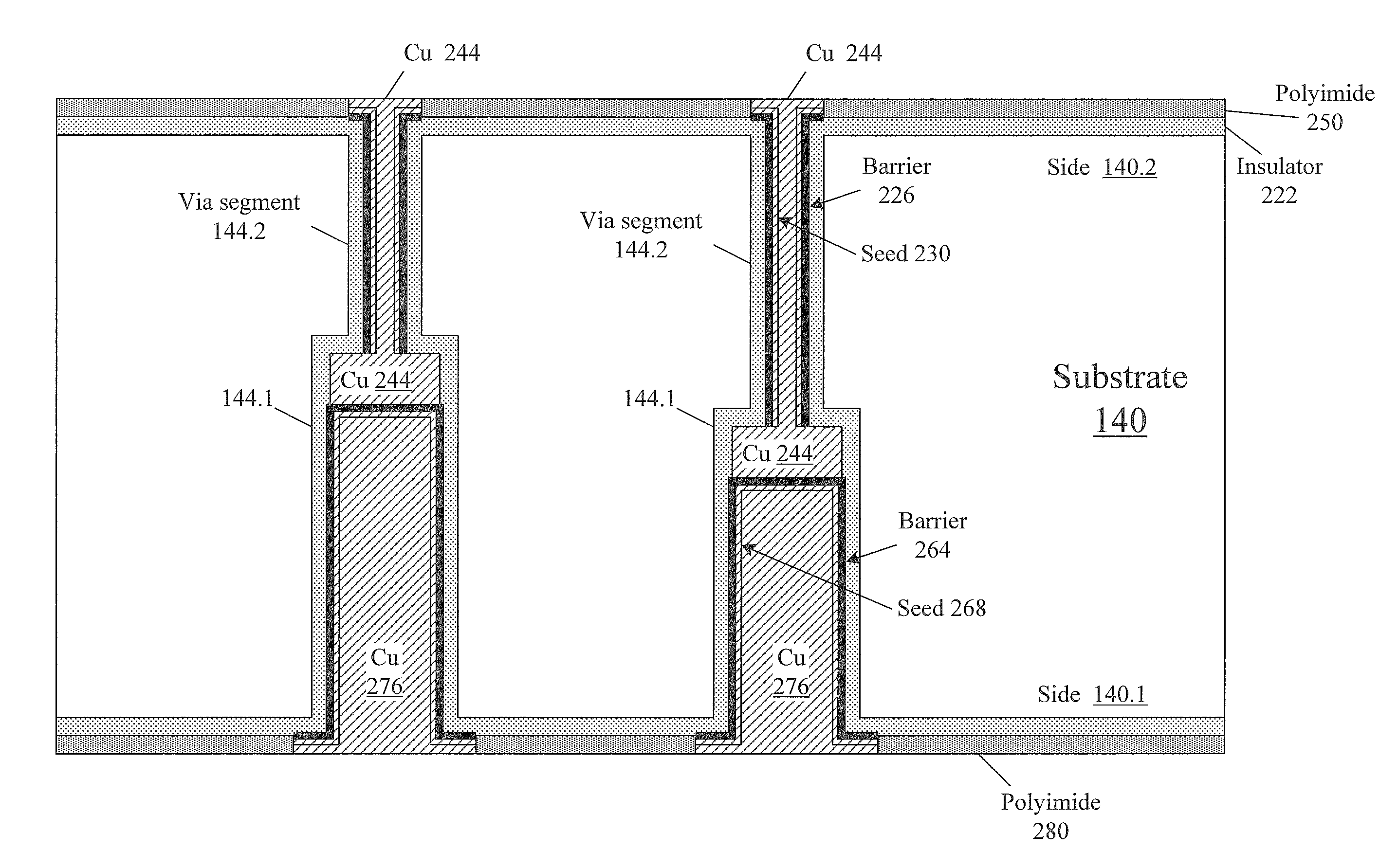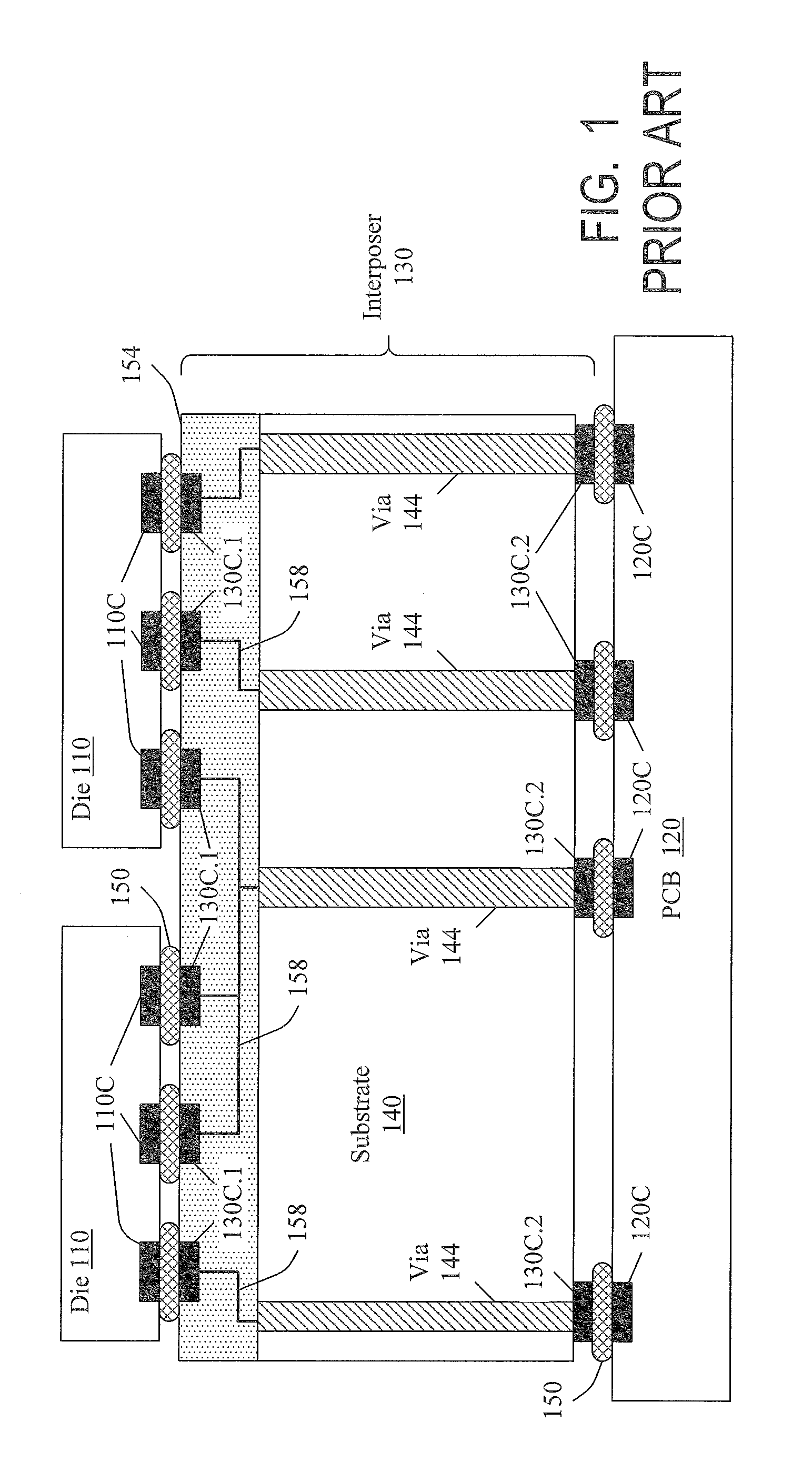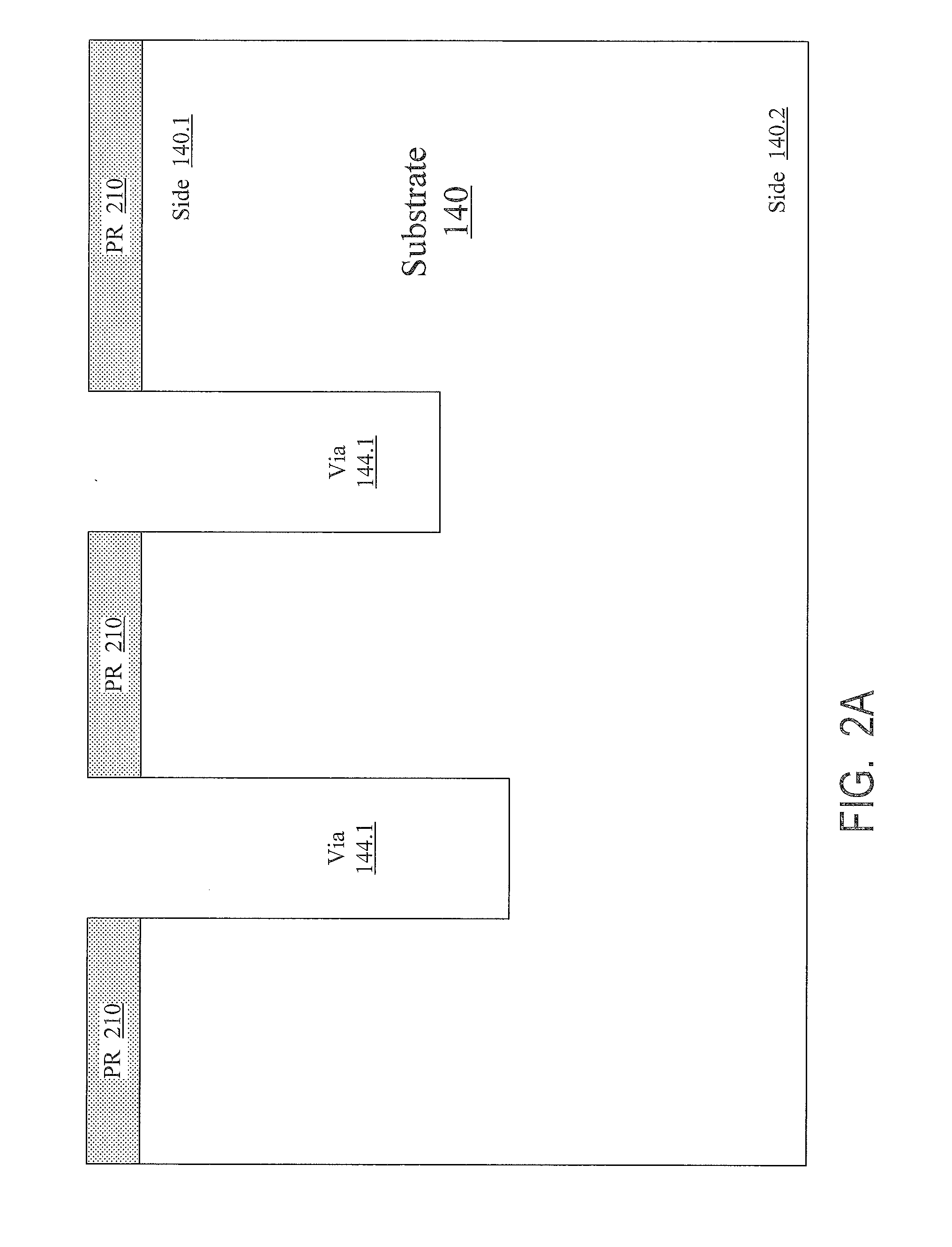Substrates with through vias with conductive features for connection to integrated circuit elements, and methods for forming through vias in substrates
a technology of integrated circuit elements and substrates, which is applied in the direction of printed circuit aspects, printed circuit electric connection formation, printed circuit manufacturing, etc., can solve the problems of high aspect ratio, inability to provide reliable metallization, and inability to provide voids or breaks, so as to reduce the length of the via subject to processing, reduce the aspect ratio subject to processing, and reduce the length of the via. effect of length
- Summary
- Abstract
- Description
- Claims
- Application Information
AI Technical Summary
Benefits of technology
Problems solved by technology
Method used
Image
Examples
Embodiment Construction
[0015]The embodiments described in this section illustrate but do not limit the invention. The invention is defined by the appended claims.
[0016]FIG. 2A illustrates the beginning stages of fabrication of metalized vias in a substrate 140 in some embodiments of the present invention. The substrate 140 can be used in an interposer 130 as in FIG. 1, to connect dies 110 to PCB 120. Substrate 140 can also be used to interconnect other structures attached to the top and bottom of the substrate, e.g. dies attached to the top to dies attached to the bottom. The structures attached to the top and bottom of substrate 140 may include other interposers. In other embodiments, substrate 140 is not an interposer but an integrated circuit not attached to any other integrated circuit. Vias 144 can be used to interconnect circuit elements at the top and bottom of substrate 140, or to connect such elements to PCB 120 or to other dies or interposers. Other uses of vias 144 may be possible.
[0017]For the...
PUM
 Login to View More
Login to View More Abstract
Description
Claims
Application Information
 Login to View More
Login to View More - R&D
- Intellectual Property
- Life Sciences
- Materials
- Tech Scout
- Unparalleled Data Quality
- Higher Quality Content
- 60% Fewer Hallucinations
Browse by: Latest US Patents, China's latest patents, Technical Efficacy Thesaurus, Application Domain, Technology Topic, Popular Technical Reports.
© 2025 PatSnap. All rights reserved.Legal|Privacy policy|Modern Slavery Act Transparency Statement|Sitemap|About US| Contact US: help@patsnap.com



